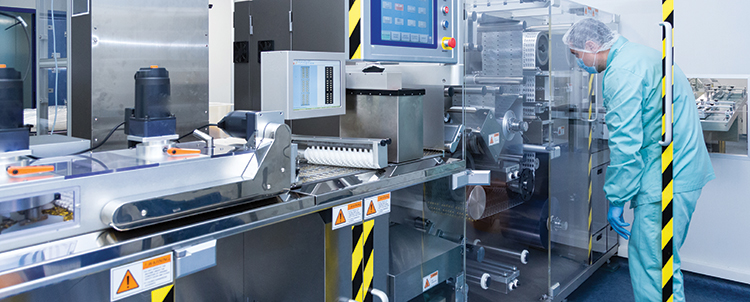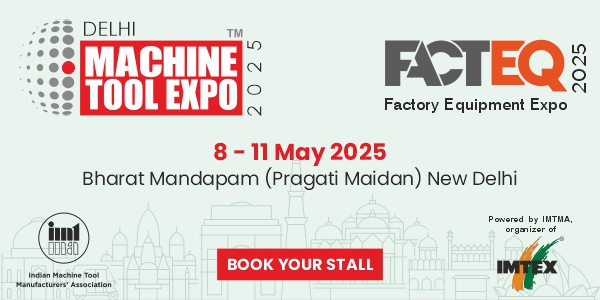The pharmaceutical industry operates in an environment where precision, speed, and accuracy are paramount. Motion control and automation have emerged as critical technologies to meet these demands, enabling pharmaceutical companies to achieve higher productivity, maintain stringent quality standards, and ensure safety. From manufacturing and packaging to quality control and logistics, the integration of advanced motion control and automation systems is transforming the pharmaceutical sector. This article explores how motion control and automation are applied in pharma, the benefits they bring, and the future trends shaping this essential partnership.
The Role of Motion Control in Pharma Manufacturing
Motion control technology is integral to automated systems, providing precise control over the movement of machines and processes. In the pharmaceutical industry, this precision is essential in multiple applications, including tablet pressing, filling, coating, and inspection.
Precision in Tablet Pressing and Coating
Tablet pressing requires extreme accuracy to ensure uniformity in weight, size, and active ingredients. Motion control systems, like servo motors and drives, allow for the precise movement and pressure control needed to create tablets with consistent dosages. Automated systems also aid in coating, where a controlled motion is critical to applying an even layer of coating on each tablet, enhancing its stability and shelf life.
Accurate Dosing and Filling
Automated motion control systems make dosing and filling processes more accurate and efficient. In liquid or powder filling, for example, high-precision servo drives control filling nozzles, ensuring consistent volume in each vial or container. This level of control reduces waste and ensures the right dosage in each unit, maintaining compliance with regulatory standards.
Automation in Pharma Manufacturing and Packaging
Automation is a game-changer in pharma manufacturing and packaging, enhancing productivity, consistency, and compliance. It involves the integration of robots, programmable logic controllers (PLCs), and human-machine interfaces (HMIs) to optimize production lines.
Robotics in Production Lines
Robots are used in multiple areas of pharma manufacturing, from handling raw materials to packaging and palletizing. Robots equipped with motion control capabilities streamline repetitive tasks, such as placing vials on filling lines or packaging finished products, reducing human error and contamination risks. Automated robotic systems also improve worker safety, particularly in handling hazardous or sterile environments.
Automated Packaging Solutions
Packaging is a crucial stage in pharma manufacturing, as it ensures product safety, shelf life, and accurate information for end-users. Motion control plays a pivotal role in automated packaging, where precision is required to seal packages, apply labels, and inspect final products. Automated packaging systems improve production speed, minimize errors, and meet the strict labeling and serialization requirements mandated by regulatory bodies.
Quality Control and Inspection with Motion Control
Quality control is a regulatory and operational necessity in the pharmaceutical industry, where defects or contamination can have serious consequences. Motion control and automation technologies have revolutionized quality inspection, enabling real-time and non-intrusive testing throughout the production line.
Vision Systems for Defect Detection
Automated vision systems equipped with motion control can inspect products in real-time, detecting defects such as cracks, inconsistencies, or foreign particles. These systems can be programmed to reject faulty products immediately, reducing waste and ensuring only high-quality products reach the market. Vision-guided robots further enhance accuracy by detecting and correcting issues such as mislabeling or improper packaging.
Automated Weighing & Measurement
Motion-controlled systems allow for automated weighing and measurement, ensuring consistent dosage and reducing human error. High-precision weighing cells combined with motion control technology provide real-time feedback, automatically adjusting parameters if deviations are detected. This guarantees that each batch meets strict quality standards before it is released.
Reducing Downtime and Increasing Efficiency
Automation and motion control systems help to reduce downtime, which is critical in pharmaceutical production, where continuous operation is often required. Predictive maintenance and quick changeover capabilities ensure that equipment operates with minimal disruption.
Predictive Maintenance
Motion control technology enables predictive maintenance by monitoring the performance of machines in real-time. Sensors embedded in automated systems collect data on parameters such as speed, temperature, and vibration, identifying potential faults before they lead to breakdowns. This reduces unplanned downtime and extends the life of machinery, resulting in cost savings and uninterrupted production.
Flexible and Quick Changeover
Automation systems with motion control allow for quick changeovers between production batches, essential for companies producing multiple drug varieties. With programmable motion controllers, equipment can be configured for different product specifications in minutes rather than hours. This flexibility minimizes downtime, increases productivity, and allows manufacturers to respond quickly to changes in demand.
Compliance and Traceability
Regulatory compliance and traceability are crucial in the pharmaceutical industry. Automated motion control systems ensure that every step in the production process is documented and traceable, meeting the requirements set by regulatory agencies like the U.S. FDA and EMA.
Data Logging and Traceability
Motion control and automation systems enable real-time data logging, allowing manufacturers to track and record each step of the production process. This traceability is invaluable for regulatory audits, quality assurance, and product recalls. Automated data collection ensures that accurate records are maintained without manual intervention, reducing errors and supporting compliance efforts.
Serialization and Anti-Counterfeiting Measures
Automation in packaging also supports serialization efforts, where each product is assigned a unique identifier. This is crucial in the fight against counterfeit drugs, which pose a significant risk to public health. Motion control systems facilitate high-speed serialization, ensuring that every package is properly labeled and trackable from production to the end consumer.
![Automation in the Pharma Industry]() Sustainable Practices Enabled by Automation
Sustainable Practices Enabled by Automation
The push towards sustainability is reshaping the pharmaceutical industry, with motion control and automation at the forefront of these efforts. By reducing waste, optimizing resource use, and enhancing energy efficiency, automated systems contribute to more environmentally friendly practices.
Reducing Energy Consumption
Motion control technology, such as variable frequency drives (VFDs), optimizes the energy usage of machinery by adjusting motor speeds based on demand. For example, in HVAC systems or fluid handling, VFDs reduce power consumption during non-peak times, lowering overall energy costs and environmental impact. These savings are particularly significant in the energy-intensive pharmaceutical sector.
Waste Minimization and Recycling
Automated motion control systems also help minimize waste by ensuring precise dosing and reducing material handling errors. Wastewater recycling and solvent recovery systems, integrated with automation, enable the reuse of resources, promoting more sustainable manufacturing practices.
The Future of Motion Control and Automation in Pharma
As the pharmaceutical industry moves toward more personalized and agile production, motion control and automation technologies are evolving to meet these new demands.
Continuous Manufacturing
Continuous manufacturing, where production runs uninterrupted without batching, is gaining traction. Motion control technology is essential in continuous manufacturing systems, enabling the precise coordination of equipment across the entire process. This reduces production times, enhances flexibility, and ensures consistent product quality, ultimately helping pharmaceutical companies meet the growing demand for rapid production.
Artificial Intelligence (AI) and Machine Learning (ML)
AI and ML are transforming motion control and automation in the pharmaceutical industry. Predictive analytics, powered by AI, enables machines to learn from data, predict trends, and make real-time adjustments. This can further improve accuracy, reduce downtime, and optimize resource use. For instance, AI algorithms can analyze data from motion sensors to predict equipment wear, allowing preemptive maintenance and avoiding costly interruptions.
Collaborative Robots (Cobots)
Collaborative robots, or cobots, work alongside human operators, combining the precision of automation with human oversight. In pharmaceutical labs, cobots assist with repetitive tasks, such as sorting samples or preparing solutions, allowing skilled technicians to focus on complex tasks. These robots, equipped with motion control systems, are safe, flexible, and can adapt to various tasks, enhancing productivity in both manufacturing and R&D environments.
Conclusion
Motion control and automation are transforming the pharmaceutical industry, driving gains in precision, efficiency, quality, and compliance. From reducing human error in production lines to enabling sustainable practices, these technologies are crucial in meeting the demands of modern pharma manufacturing. As continuous manufacturing, AI, and cobots shape the future, motion control and automation will remain at the forefront of this transformation, ensuring that pharmaceutical companies can deliver high-quality, safe products efficiently and sustainably.
In the years to come, as the pharma industry continues to grow and evolve, so too will the motion control and automation systems that support it. These innovations not only enable the production of essential medications at scale but also pave the way for a future where efficiency, precision, and sustainability are harmoniously achieved in pharma.



 Sustainable Practices Enabled by Automation
Sustainable Practices Enabled by Automation

